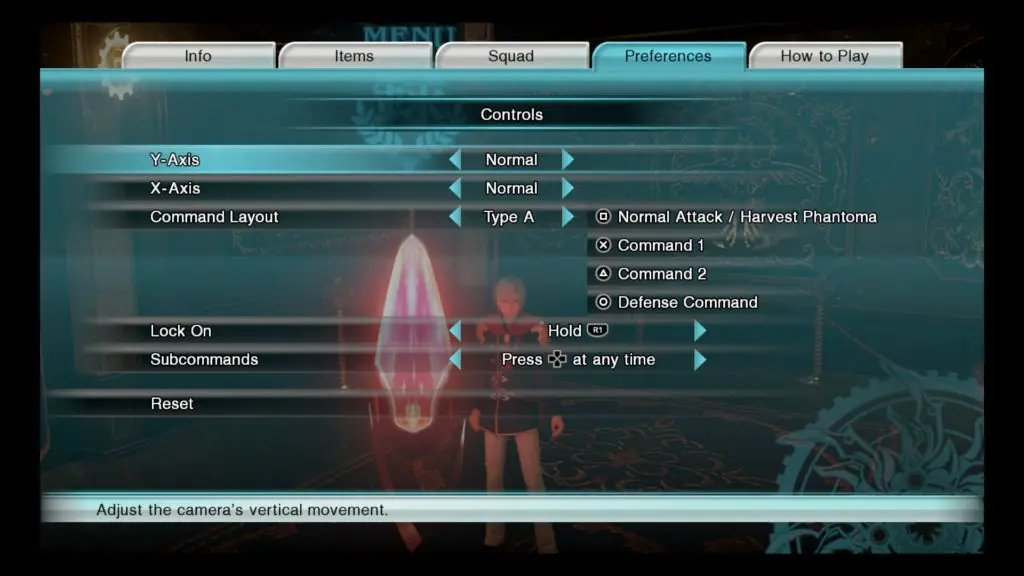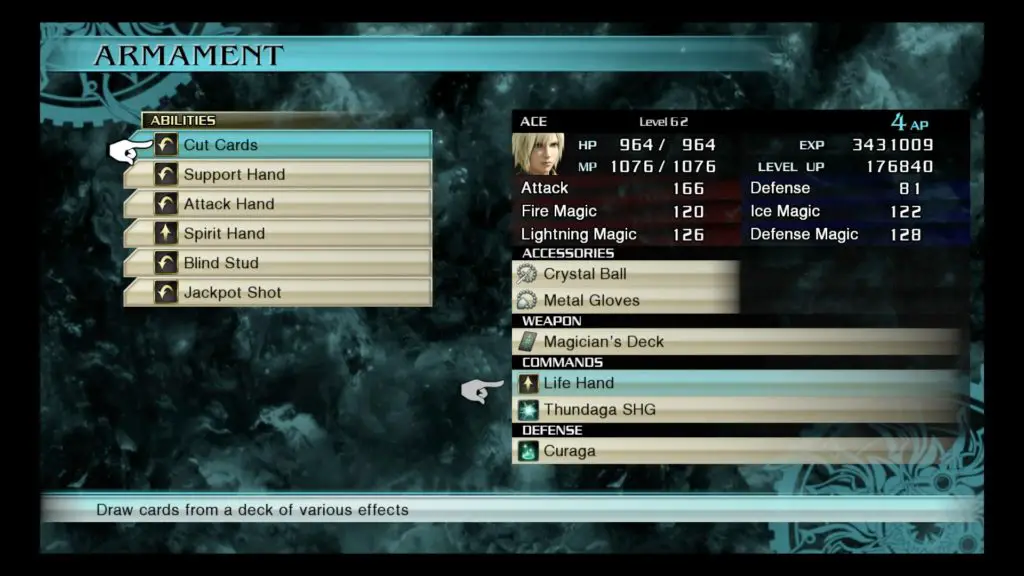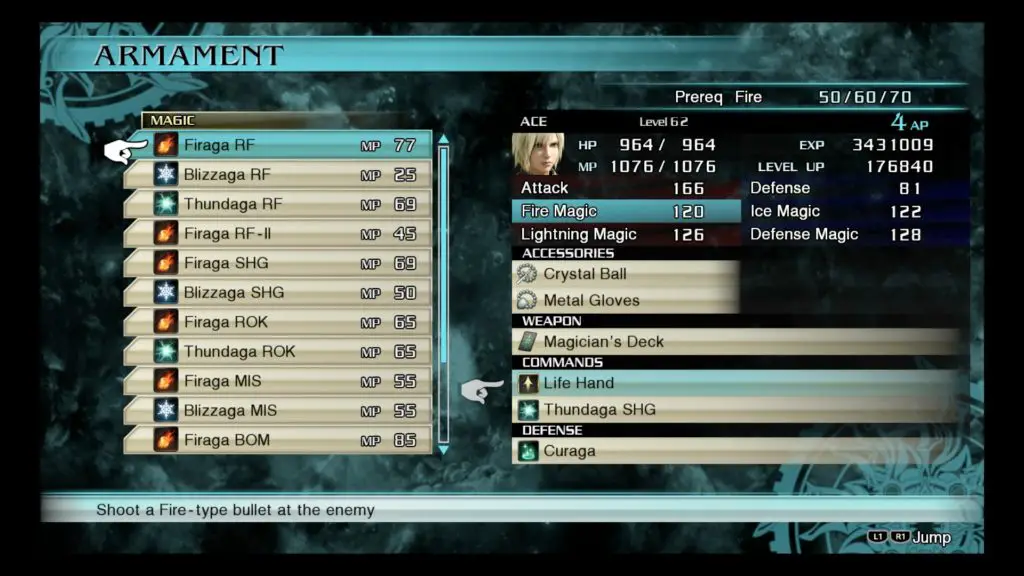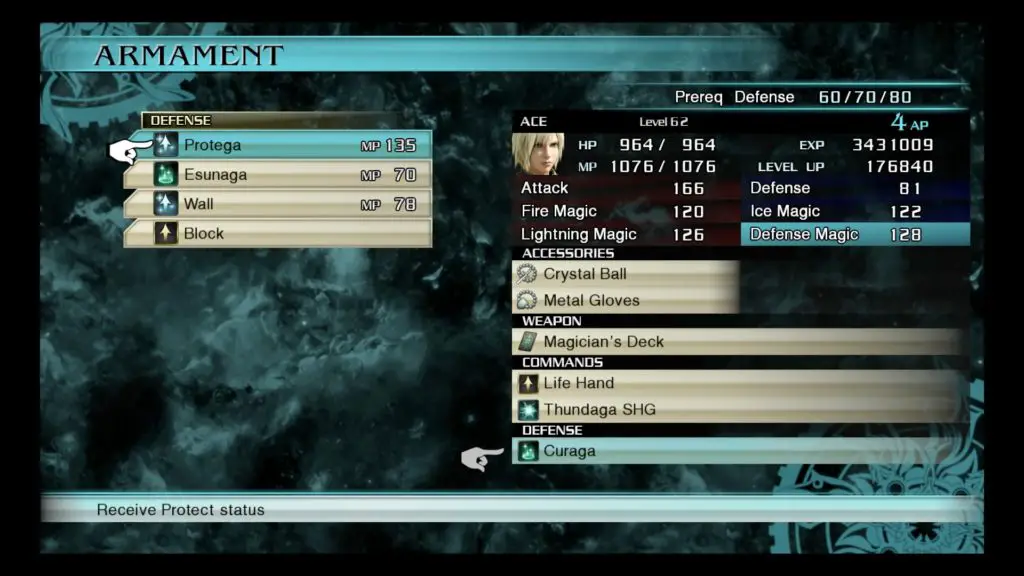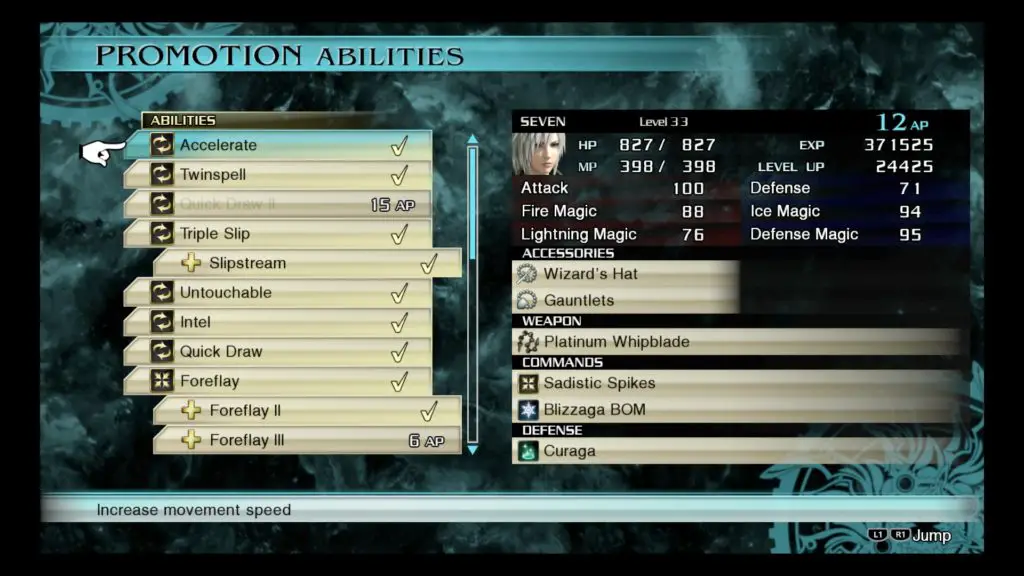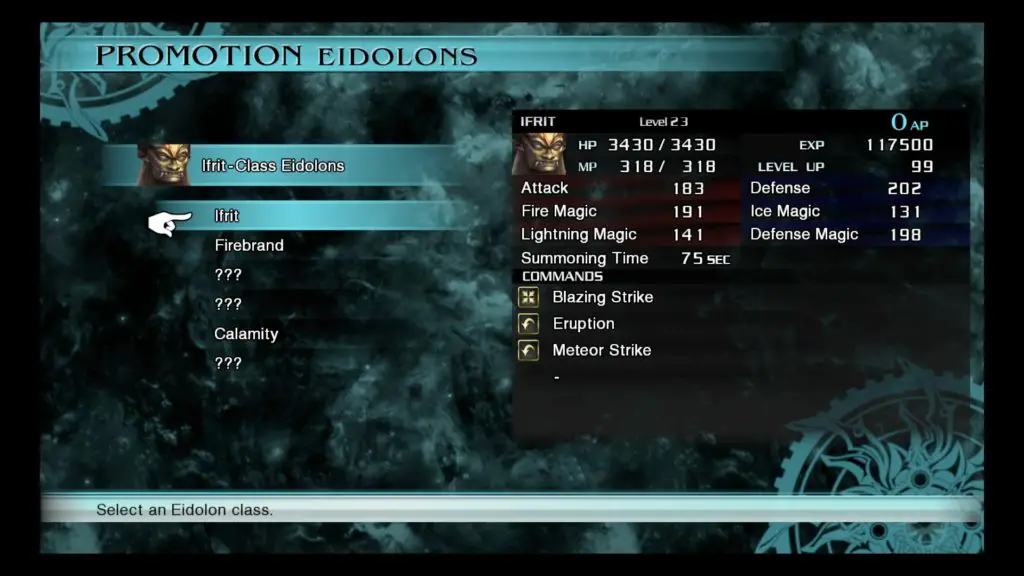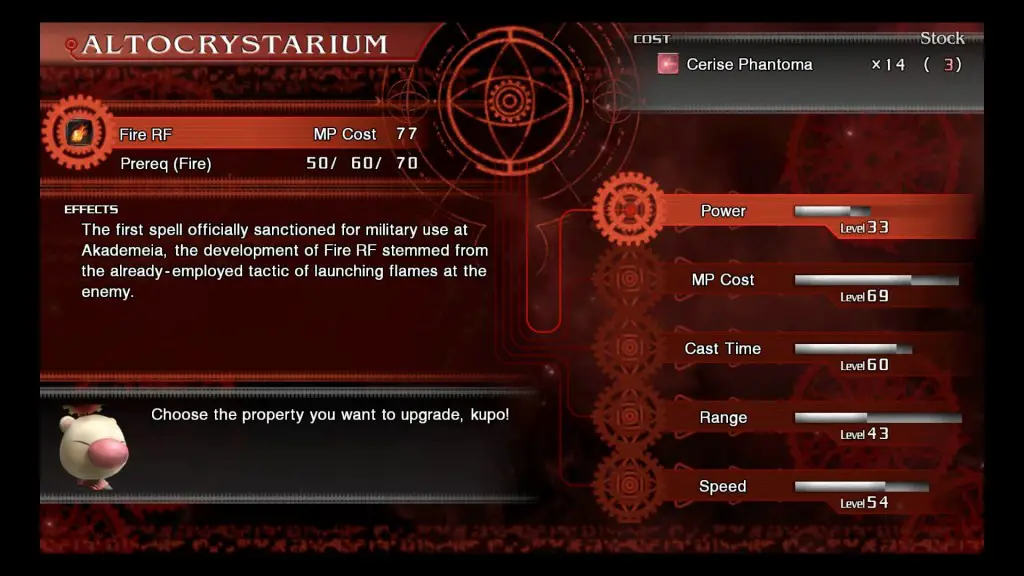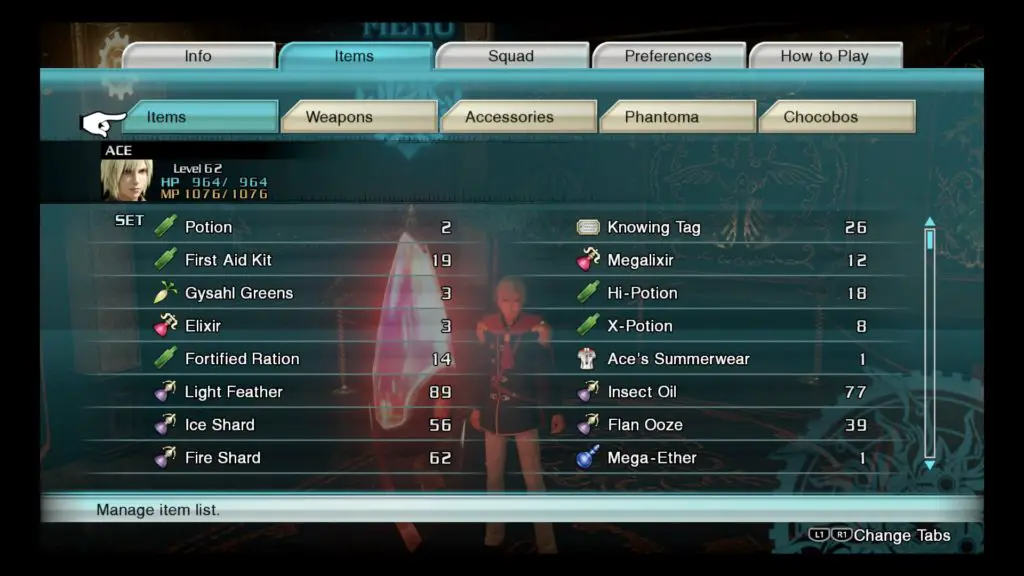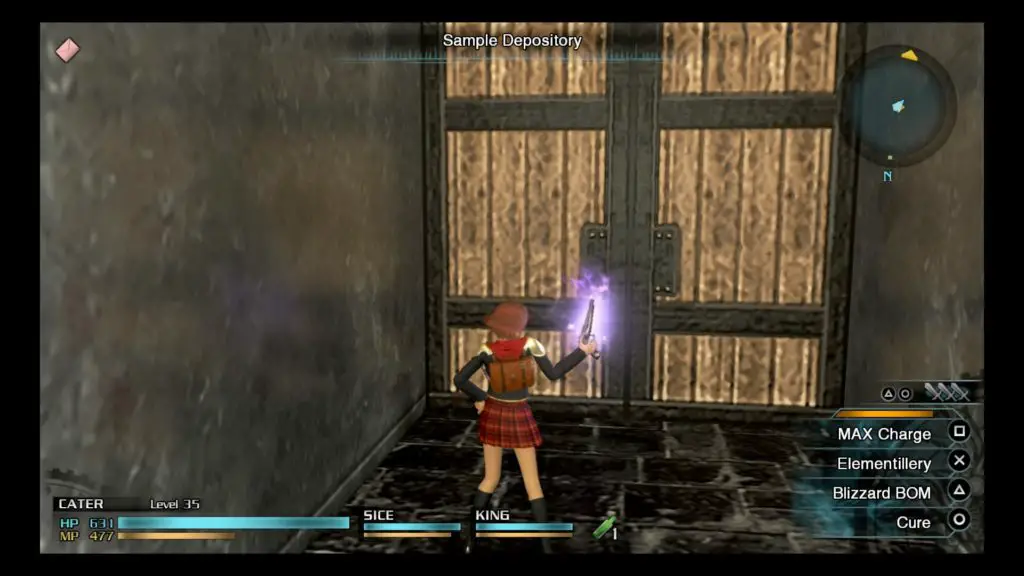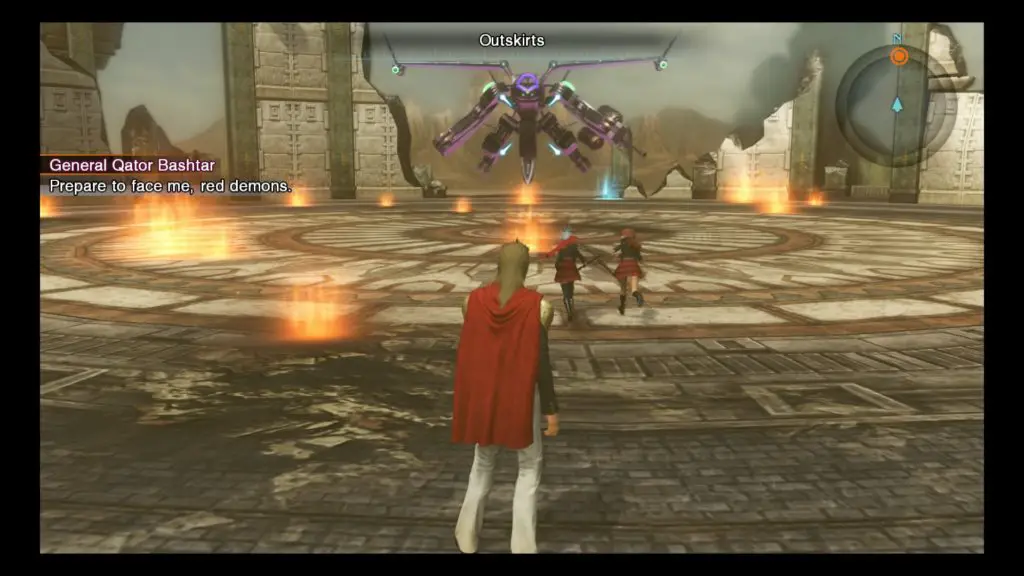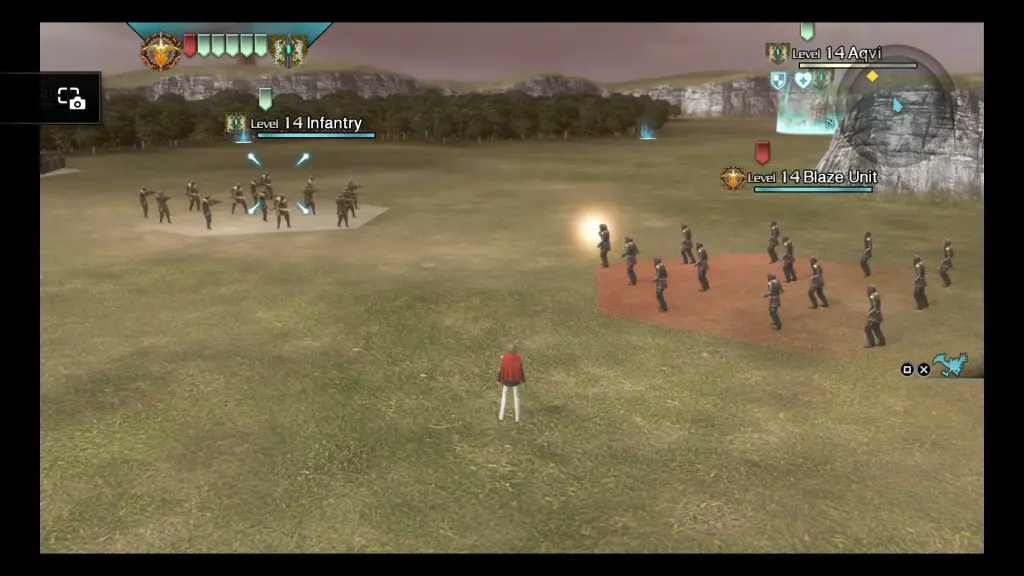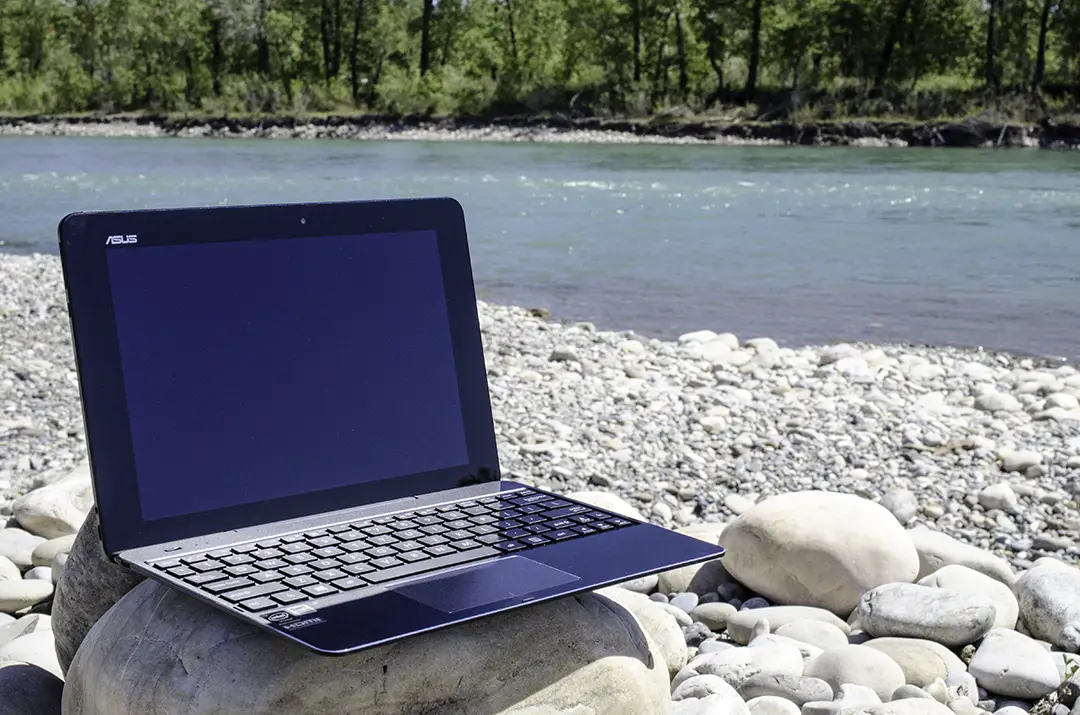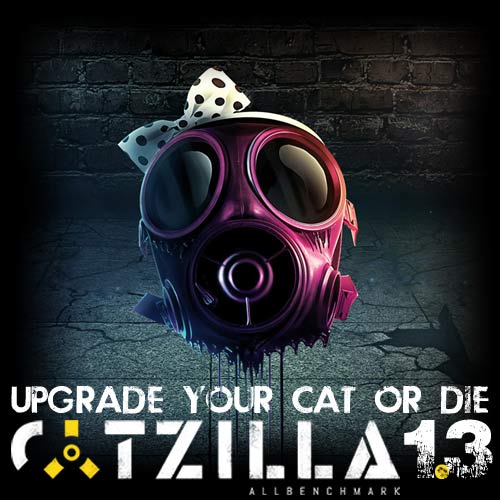Introduction: After some fan feedback Square-Enix has finally localized Final Fantasy Type-0. A game that was praised by the Japanese audience on release for the PSP, and was never localized and brought to North America. However, after the years porting a game to current gen consoles and leaving last gen out is an interesting move. There are some good ideas as well as missed opportunities in Type-0.
 Story: The story of final fantasy Type-0 follows a group of cadets from the special class zero. The story starts with the Militesi Empire declaring war on both the dominion of Rubrum and the Lorican Alliance. Using the power of the white tiger crystal Cid Aulstyne deployed a crystal jammer on Rubrum to nullify the use of magic, as well as dropped an ultima bomb on Lorica. Lorica was instantly decimated with no known survivors, while Rubrum’s main strength of magic and summoning was nullified. Class zero is then deployed in the defense of Rubrum in order to destroy the crystal jammer and stop the invasion. Class zero unlike the rest of Rubrum do not gain power from the crystals and have power granted to them from another source. The source has something to do with the phantoma the cadets collect from defeating enemies and an experiment created by their mother. Utilizing the power they control they are able to push back the Militesi forces out of Rubrum. With the aide of class zero, future operations start in order to push back and stop Militesi and Cid Aulstyne. During the story
Story: The story of final fantasy Type-0 follows a group of cadets from the special class zero. The story starts with the Militesi Empire declaring war on both the dominion of Rubrum and the Lorican Alliance. Using the power of the white tiger crystal Cid Aulstyne deployed a crystal jammer on Rubrum to nullify the use of magic, as well as dropped an ultima bomb on Lorica. Lorica was instantly decimated with no known survivors, while Rubrum’s main strength of magic and summoning was nullified. Class zero is then deployed in the defense of Rubrum in order to destroy the crystal jammer and stop the invasion. Class zero unlike the rest of Rubrum do not gain power from the crystals and have power granted to them from another source. The source has something to do with the phantoma the cadets collect from defeating enemies and an experiment created by their mother. Utilizing the power they control they are able to push back the Militesi forces out of Rubrum. With the aide of class zero, future operations start in order to push back and stop Militesi and Cid Aulstyne. During the story  L’cie and Fal’Cie make there appearances and are critical to the main storyline. The story starts out quite simple and eventually starts to be convoluted and confusing as the story advances, as the L’cie and Fal’Cie start becoming a major focus of the story. For anyone’s first play through of the game the story will become a confusing mess especially as the true story is not explained until a second play through. In a second play through the player is able to take part in special side missions that are not part of the main story and shed more light on the crystals, gods and L’cie/Fal’Cie. Another big part of the story that is explained at the beginning is in this world when people die, all memories of that person is erased.
L’cie and Fal’Cie make there appearances and are critical to the main storyline. The story starts out quite simple and eventually starts to be convoluted and confusing as the story advances, as the L’cie and Fal’Cie start becoming a major focus of the story. For anyone’s first play through of the game the story will become a confusing mess especially as the true story is not explained until a second play through. In a second play through the player is able to take part in special side missions that are not part of the main story and shed more light on the crystals, gods and L’cie/Fal’Cie. Another big part of the story that is explained at the beginning is in this world when people die, all memories of that person is erased. 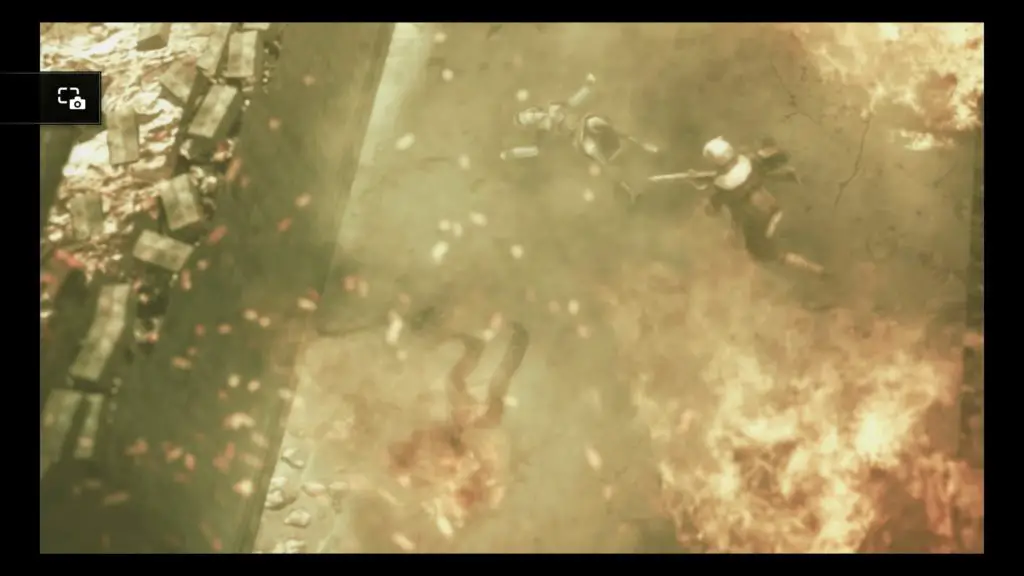 Due to this, all people in the world of Orience carry tags called knowing tags. These tags when found on the bodies of each battle or a person’s death lets people know that that person existed. This however, does not affect L’Cie or Fal’Cie, which are remembered even if they die or become crystal. This does make for some interesting plot points between certain members of class zero, due to one of the members brother was one who died and the reasons behind his death cannot be fully explained. I found the story to be very interesting and overall a good story after playing the game twice. Although I do believe that someone should not have to play a game more than once to fully understand the main story. Even though this lends to some replay ability a game should be fun
Due to this, all people in the world of Orience carry tags called knowing tags. These tags when found on the bodies of each battle or a person’s death lets people know that that person existed. This however, does not affect L’Cie or Fal’Cie, which are remembered even if they die or become crystal. This does make for some interesting plot points between certain members of class zero, due to one of the members brother was one who died and the reasons behind his death cannot be fully explained. I found the story to be very interesting and overall a good story after playing the game twice. Although I do believe that someone should not have to play a game more than once to fully understand the main story. Even though this lends to some replay ability a game should be fun 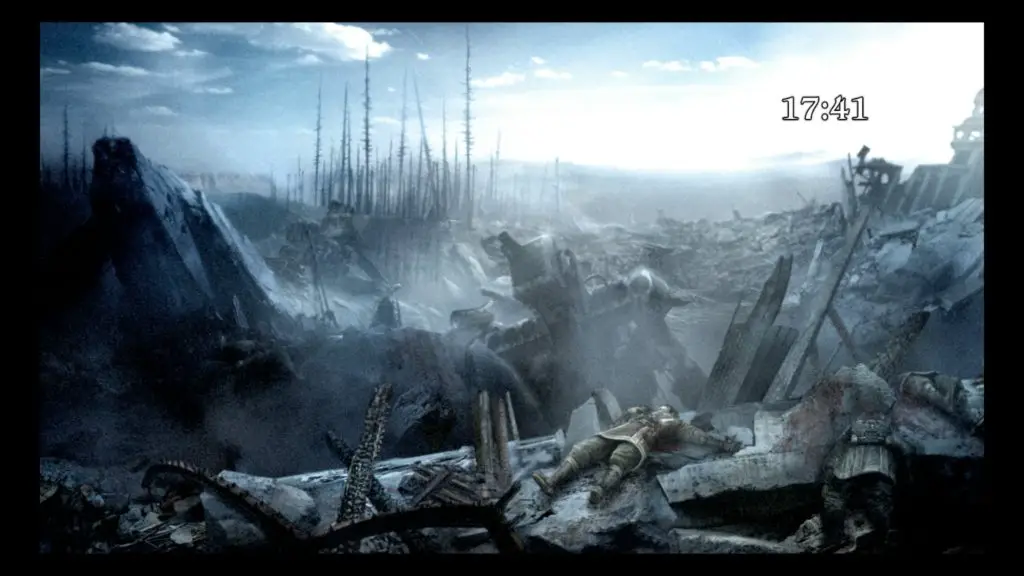 and engaging to surmount to another play through of a game. Forcing someone to play a game multiple times in order to understand the game’s main story is a bad design. This however, does not include playing the game for other characters side stories and quests that can be missed. Optional things including backstory of side characters are things I can understand taking multiple playthrough’s or being slightly hidden. As for the games story itself, prepare yourself for one of the darkest and grittiest stories in a final fantasy game. This game focuses completely on war and death and many NPC’s die throughout the game. I was quite surprised at the amount of bloodshed alone as I progressed through the game. If this game was to of come out after Final Fantasy XII and not XIII, I would not have been as surprised. As Final Fantasy XII’s story is in a similar fashion and direction that this game was, although not quite as dark.
and engaging to surmount to another play through of a game. Forcing someone to play a game multiple times in order to understand the game’s main story is a bad design. This however, does not include playing the game for other characters side stories and quests that can be missed. Optional things including backstory of side characters are things I can understand taking multiple playthrough’s or being slightly hidden. As for the games story itself, prepare yourself for one of the darkest and grittiest stories in a final fantasy game. This game focuses completely on war and death and many NPC’s die throughout the game. I was quite surprised at the amount of bloodshed alone as I progressed through the game. If this game was to of come out after Final Fantasy XII and not XIII, I would not have been as surprised. As Final Fantasy XII’s story is in a similar fashion and direction that this game was, although not quite as dark.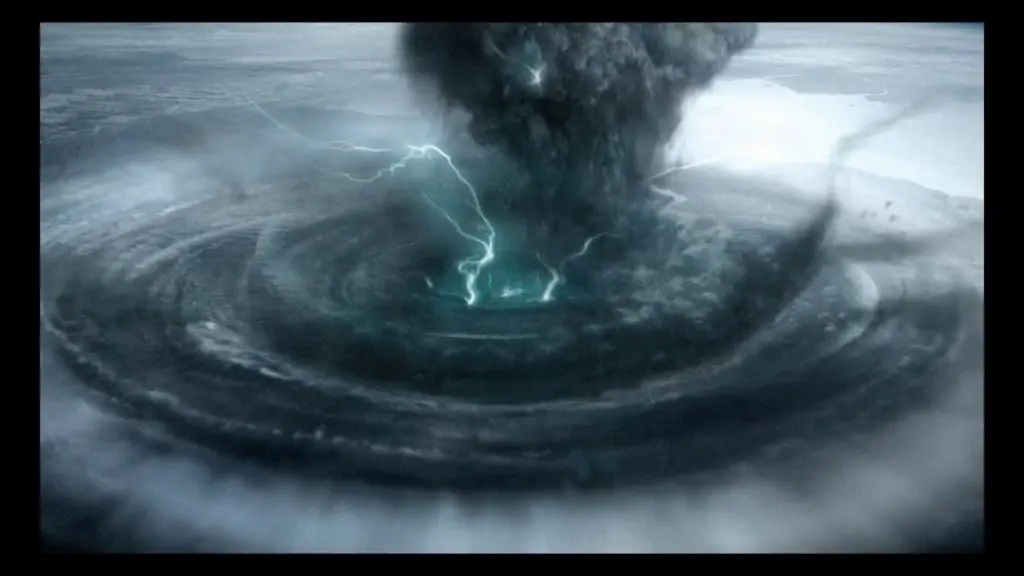
Controls: Controls in type zero are somewhat of an action RPG hybrid much akin to Final Fantasy 7: Crisis Core. The big difference is the change from menu input during combat to everything being mapped to buttons previously before starting a mission. This can be changed throughout levels at save points though for anyone who does not like the abilities they have set for their current team. A total of three commands can be mapped for each character to triangle, circle and x, one skill and magic attack, or two skills for offensive abilities, and one defensive ability can be assigned. The circle button is used to dodge enemy attacks or when held will use your defensive ability. When near an object or NPC the x button will change to interact with the object while on missions, outside of missions x always interacts, as you cannot attack in towns or areas with no hostile forces or enemies. Square is your regular attack for each character. The R1 button is used to lock on to targets for attacks, targets can be switched with the right analogue stick. While targeting an enemy if it dies you can use the square button to harvest that enemy’s phantoma, which restores some MP and gives you phantoma to upgrade spells later on. The right and left buttons on the D-Pad are used to switch between active party members; the up button is used to switch in a reserve party member if a party member dies in combat, and the down button uses the currently equipped item you have set. Depending on your stance, you can hold triangle and circle together to initiate a triad maneuver summon an eidolon or use the vermillion bird ultimate attack. While on the over world square and x is used to summon a chocobo if you currently have any. The control set up is straightforward and easy to use for the entirety of the game and is quite simplistic.
Game Play: The Game play is mostly action RPG with some missions focusing on some small RTS elements. For the action RPG segments including some over world and optional dungeons the game plays similar to that of Final Fantasy 7:Crisis Core though there are some key differences. You can select your party for missions between any of the 14 main characters, all of which are unique and play differently. Although each character has their own unique move set, magic and defensive skills are shared across all characters. One of the unique and new mechanics added in this game was killsight and breaksight, which can be triggered when enemies are undergoing animations for specific attacks. Breaksight when triggered allows for massive damage to enemies with multiple health bars, while killsight allows for the next attack in a short period to instantly kill the target. A large amount of game play, especially in later parts of the game involve the player to utilize this mechanic to make enemy encounters and boss fights easier. They are also required for a few boss fights in order to damage or kill the boss. Being an RPG characters gain experience and level up by defeating enemies, completing missions and quests throughout the game. As characters level up they gain increased stats, as well as new abilities that can be learned via the skill points acquired from leveling up. Enemies also drop phantoma, which can be harvested and used to upgrade magic spells later on in the game. At the start of a mission players can select the option to receive support from Rubrum, this calls in random characters to replace party members in combat to gain SP, SP then can be traded in to an NPC at the Academy for various items, accessories and weapons. Another thing that can be enabled at the academy is SO’s, when in a mission SO’s are activated when the player presses the touchpad when the words ‘incoming’ appear on the screen. SO’s are timed objectives that if completed award useful items including turbo ethers and elixirs. The downside to SO’s is if you fail them, you either have to dodge multiple instant kill ground lasers or your current character is killed.
Shared offensive magic skills consist of Blizzard, Fire and Thunder as starting magic, each with 3 levels of strength for example: Fire, Fira, and Firaga. Ra versions are the second and Ga versions being the strongest. All the regular elemental magic also has a type that is based on how the character unleashes that elemental attack. Rifle (RF) which fires a magic bullet forward, charging these fires a second or third shot. Shotgun (SHG) fires a spread of magical bullets over a short-range area in front of the caster, charging increases the overall area of effect and range. Rocket (ROK) fires a large elemental blast from the user that explodes on impact and causes massive elemental damage. Missile (MIS) similar to rocket but instead of firing upwards and volleying down is a straight magical blast in the direction of the target. Bomb (BOM) charges and releases an elemental explosion around the user similar to bomb enemies when they detonate. Out of the different elemental types in most situations, the ranged attacks are more useful. RF, SHG and ROK/MIS being primarily used for all kinds of enemy patterns and are very useful for flan type enemies that are only weak to certain magic attacks. Overall, I found BOM almost useless when used, as there are very few situations where it would be beneficial to be up close in a group of enemies. As you progress through the game and do optional quests you can also unlock unique special magic attacks each of them are very useful depending on the situation. Ultima, Death, Bio, Quake, Tornado, Holy and Meteor, all these attacks are quite powerful. Although I was not able to unlock all of them I was able to get Ultima, Death, Bio and Quake. Quake does a large amount of damage to all ground enemies, Bio poisons enemies around the caster, death inflicts killsight and ultima does a massive amount of damage to all enemies.
For defensive magic, each character can choose from six different spells. The first three spells Cure, Protect and Esuna all follow the same strength basis as the offensive elemental magic spells in which they have a regular version, Ra and Ga version. Cure heals a target for some HP, Cura heals the group for a similar amount of HP, and lastly Curaga heals the group for massive amounts of HP. Protect bestows the effect of protect which reduces damage on a target or multiple targets in the stronger versions. While Esuna removes status effects on party members. As for the other three defensive spells, Raise resurrects a fallen party member, Wall creates a magical barrier that blocks projectiles, and lastly Avoid uses MP to automatically dodge enemy attacks.
As for character specific attacks, all characters have their own unique weapons that all moves and skill sets are derived from. Ace uses cards that he throws at enemies as ranged attacks and all abilities are based on the current deck he has equipped. He can shuffle his deck for a random card based on that deck and use the ability of that card, these abilities can be supportive, offensive or defensive. Ace is an easy character to use and has many useful skills that can be used in any situation. Deuce uses a flute, which casts musical spells akin to a bard in previous final fantasy series; most of these buff/debuff the party or enemies but some can actually cause damage as well. When using her regular attack Deuce uses the flute as a short-ranged melee attack. Trey wields a bow and is by far the best ranged character in the game, with the longest range and some great area of effect attacks Trey can annihilate groups of enemies. The fourth character Cater wields a magitek pistol, which fires weak homing shots towards enemies. Cater is the weakest character in the game offensively but makes up for it with being the fastest and most evasive. She also has very strong magic attack making for her elemental bullets being able to do decent damage. Cinque is a melee powerhouse being the second strongest character in the game and wielding a giant mace that shakes the ground. Although this huge strength comes at a cost, as she is incredibly slow when attacking. Cinque is not a character for beginners as she takes a lot of skill to use in battle, she is slow but she hits hard and can even cause tremors and earthquakes that stun enemies. She is great against ground-based enemies and quite effective, though she lacks speed and reach to deal with aerial foes effectively.
The sixth character Sice is honestly my favorite melee character even though she does not have the highest stats her utility is awesome. Sice wields a giant scythe that has great range for a melee character; she is also quick with her attacks. All of Sice’s abilities have great range, as she is able to fire a dark nebula at a target, conjure a target seeking tornado, or negative aura area of effect attack. Seven is a melee character, which uses a whipblade that is a hybrid of a whip and a sword. Her attacks have a good amount of range and her whipblade can be charged with different elements using elementalash. For a melee like Sice, Seven is one of the few that has decent/good attacks for aerial based foes as she can use snakebite to pull them towards her or even hit them from a range regularly at times. Eight is probably the overall hardest to use melee character I found, he uses only his fists and fights like a monk. He is incredibly fast but with many aerial foes in the later stages of the game, he has a hard time landing any hits, as he has to be extremely close to land his punches. Though if you can master his playstyle Eight is extremely fast, has high recovery and easy to dodge enemy attacks. He can do massive damage in short amounts of time with his abilities, with the only downside being how close he has to be to an enemy in order to land a hit. Nine wields a lance and attacks are all reminiscent of dragoon’s from previous final fantasy games, having decent range for a melee character. The most interesting and notable thing about Nine though is he has the highest HP and defense stat of any other character. This surprisingly makes him also the best tank for any situation including boss fights, and one of the better melee characters to bring in hard encounters.
The tenth playable character is Jack and is the strongest melee character in the game; his only downside is actually the opposite of Cinque. Where Cinque is slow at attacking with her mace Jack attacks extremely fast with his Katana, the difference Jack when in combat stance is the slowest moving character in the game. He holds his Katana in front of him ready much like a samurai from previous final fantasy games. Queen uses a sword and fights akin to that of fencing techniques. She is very quick, mobile and easy to use and a great melee for beginners to learn how to play the game. She is overall an average melee character with all rounded stats and some support abilities that can be used to help the party. Queen has abilities that can restore other party members HP and MP, though the MP recovered is at the cost of Queen’s HP this can be nullified by a party member casting cura once their MP has been replenished. King the final member of the original class zero is the final ranged party member. King uses twin magnums in battle that actually require ammo unlike other characters. When he runs out of ammo, he is unable to attack with his guns until he reloads. King has the second longest range for his attacks and even though he has relatively low strength his attacks are overall decent, and he has the fastest attack speed of any ranged character, able to empty entire clips into enemies in seconds.
Machina Kunagiri one of the two newest members to class zero and wields two drill like swords. Machina is extremely fast and is a melee based on chaining attacks in succession to overwhelm enemies. Machina is quite strong and able to exploit the Killsight function quite often. This makes Machina a very beginner friendly character to use. The final playable character is Rem Tokimiya who dual wields daggers similar to that of a rogue or ninja. All Rem’s attacks are incredibly fast as well but she has relatively low strength, although she has the highest magic stats in the game. This makes her possibly one of the strongest characters in the game later on as magic spells and abilities become more powerful. Rem is not a beginner friendly character as she has one of the lowest HP and defense values of all characters, she is a glass cannon if used effectively. This is a risk and reward character much like Cinque or Jack, risky to use but are powerhouses if used properly.
Overall, I found the main combat of the game and all the characters a blast to play as, even the ones that were tough to use at first. My favorite characters to use though were Ace, Sice and Trey, Sice was my melee powerhouse, Trey was my ranged user and Ace was support. This combination worked really well throughout the game. Although late in the game, I suggest that you have at least six characters of level for the missions, maybe more leveled if possible to switch between. As some missions require splitting up the group into two, so having a main and secondary group to fall back on is useful and recommended.
Now on to the less, impressive gameplay element the real time strategy section, this was not added with much depth and I found more aggravating than fun. The over world RTS sections have the player tasked with trying to take over cities and domains on the map, you only have two different types of units that can be used. One type that is good at siege and taking down various domains and barriers on cities, and another that is meant for taking down the strong or big enemies of that map. Unfortunately, this was implemented quite poorly, as the units that were supposedly good against the strong enemies also get one shot killed by them as well. This causes a standstill on the map and no progression without player interference. This can be quite aggravating if you are using melee characters on the world map, as all enemies are ranged, and will shoot you if your character is in range. Therefore, the only way to effectively progress is through hit and run techniques with ranged characters. This causes long drawn out battles that are overall just boring, I found that these sections especially later on in the game are not worth playing and am thankful they have the option to be skipped.
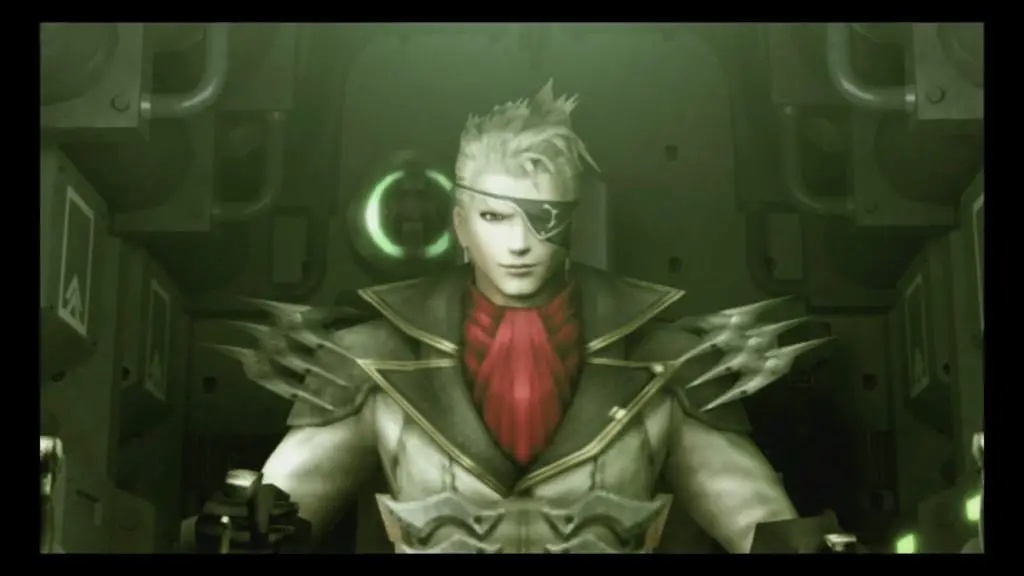 Graphics/Music: Graphics for the game are similar to that of an early PS3 game or late PS2 game. They do not seem to have much of a visual upgrade from the PSP version of the game, outside of stretching out and touching up screen resolution from portable to TV. For an HD re-release, I expected a bit more. The cinematics although look very good graphically, but when compared to the PSP version, it is also very hard to tell if any touch ups or graphical improvements were made at all. The voice acting is overall good with only a few cringe worthy dialogue sections. The only big problem is a large amount of the lip-syncing was off. This made for a slight annoyance in cut scenes when characters mouths were moving and they were not talking or did not match the words being said. Voice acting aside the music score for the game as a whole was done well and enjoyable for a JRPG.
Graphics/Music: Graphics for the game are similar to that of an early PS3 game or late PS2 game. They do not seem to have much of a visual upgrade from the PSP version of the game, outside of stretching out and touching up screen resolution from portable to TV. For an HD re-release, I expected a bit more. The cinematics although look very good graphically, but when compared to the PSP version, it is also very hard to tell if any touch ups or graphical improvements were made at all. The voice acting is overall good with only a few cringe worthy dialogue sections. The only big problem is a large amount of the lip-syncing was off. This made for a slight annoyance in cut scenes when characters mouths were moving and they were not talking or did not match the words being said. Voice acting aside the music score for the game as a whole was done well and enjoyable for a JRPG.
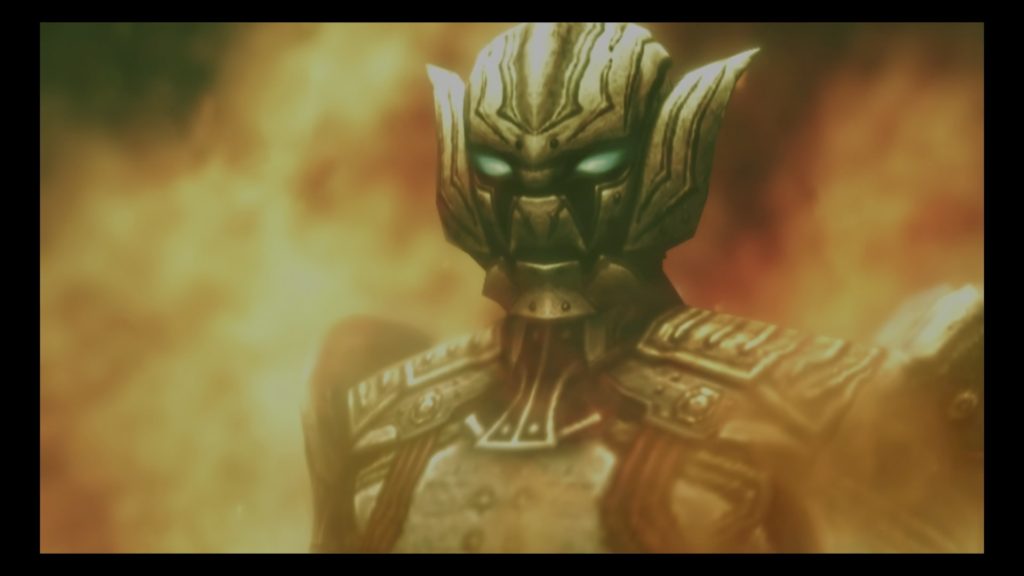
Recommendation: Final Fantasy Type-0 is a game I can recommend to Action-RPG fans, or those who like more dark and gritty stories to their RPG’s. Although for a game that did not seem to have much effort put into localization or porting, I find it hard to recommend at a price above 30-40$. Unless you really need that Final Fantasy 15 demo, a lazy port of an old game should never cost more than the original price for the game.
Conclusion: Final Fantasy Type-0 is one of the most unique sub games of the main series. With a dark and gritty story of war, a large selection of playable characters, and a fun combat system. Final Fantasy Type-0 despite its flaws is a good game, and there is a lot of fun and replay-ability to be found.





